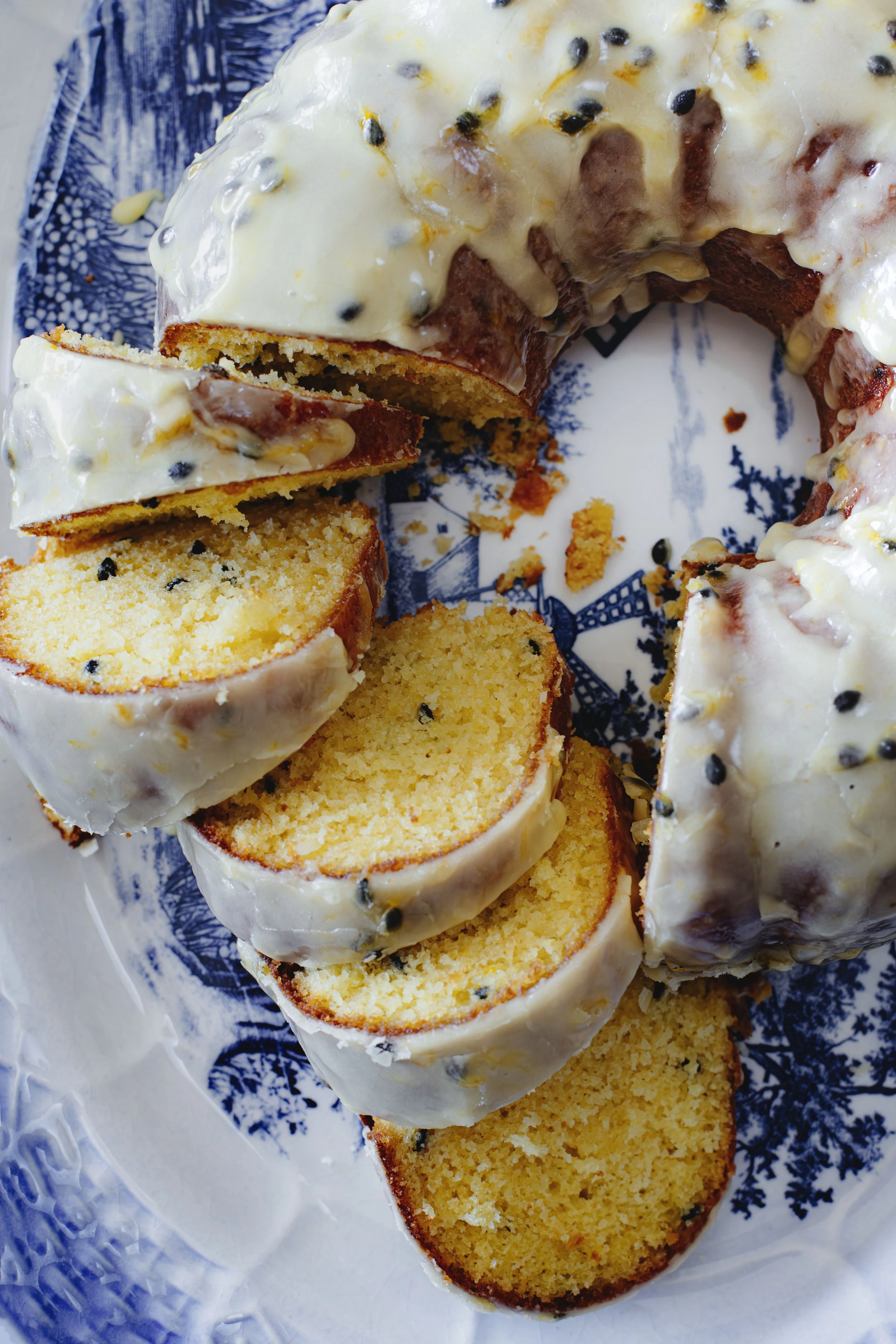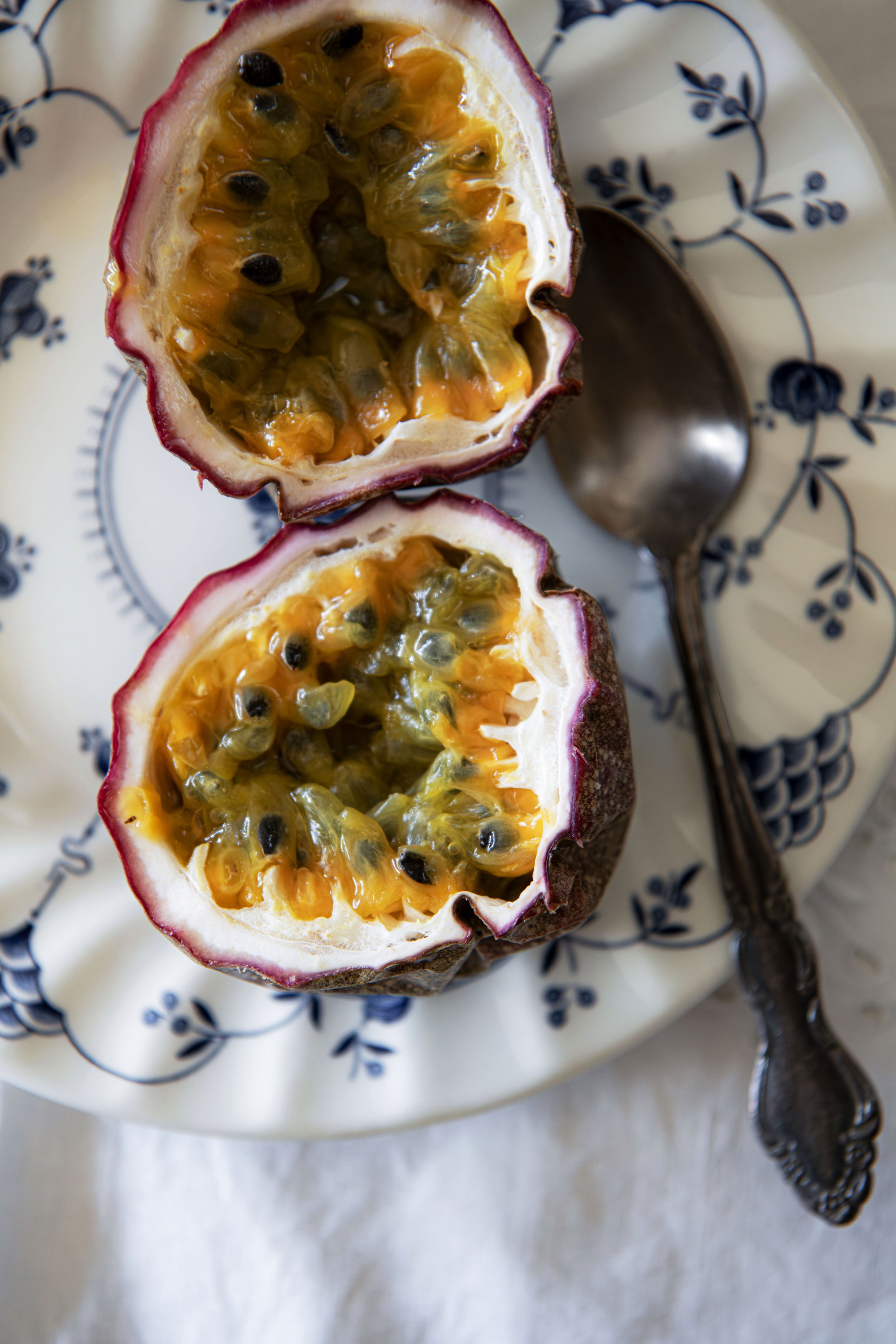PassionFruit and Coconut Cake
Autumn in the South West arrives gently but surely. The mornings turn misty and cool, the air smells of damp earth after the first rains, and the trees seem to glow a deeper green. This is the time of year when I find myself especially drawn to baking again.
Passionfruit is everywhere in autumn, baskets full at the markets, and often I leave a friend’s house with a generous handful. It is the very taste of this season.
I have been baking this passionfruit and coconut cake on repeat, first as part of my collaboration with the Southern Forests Food Council, and later for family and friends. Last year, it even travelled with me to Perth when I ran a cooking demonstration at Gilbert’s Fresh Market. I remember packing up the car with bowls, ingredients, and nerves, wondering how it would all come together on the day as I had hardly baked in an airfryer before, and that was what we were going to use at the demonstration.
The cake was a hit. Plates cleared quickly, people came back for seconds, and I drove home tired but proud to have shared something that speaks of our region.
This is one of those cakes worth keeping at hand’s reach. No fancy equipment, no elaborate steps, just a bowl, a whisk, and a pan. Stir it together in minutes, slide it into the oven, and before long your kitchen smells of butter, coconut, and passionfruit. It is simple, sunny baking at its best and the kind that makes you wonder why we ever complicate things.
It is also a recipe rooted in place. For this one I used passionfruit and lemons grown in the Southern Forests, milk and cream from Bannister Downs, and pasture-raised eggs with the yellowest yolks from the Three Ryans. There are several passionfruit growers in the region; Jim and Thea at Seven Day Farm, Mitch and Jen at Willarra Gold, and the Markovski family behind Mr. Pashy by Appletech. Like so much fruit grown here, the cooler climate means they take longer to ripen, and that extra time seems to pack in even more flavour.
Passionfruit is one of the treasures of autumn. The vines hang heavy with purple globes, their shells filled with golden pulp that is sweet, tangy, and full of sunshine. A spoonful adds cheer to almost anything, from cakes and tarts to a simple bowl of yoghurt. Even the flowers are extraordinary, steeped in hot water they make a wonderful bedtime tea.
Passionfruit and Coconut Cake
Ingredients
For The Cake
80g desiccated coconut
300g self-raising flour, sieved
1tsp baking powder
1/4 tsp salt
225g caster sugar
125g unsalted butter, melted and cooled
100ml milk, lukewarm
150ml passion fruit pulp
1 ½ tbsp lemon juice
4 pasture raised eggs
For The Passionfruit & Lemon Syrup
1/3 cup passionfruit pulp
2 tbsp lemon juice
1/2 cup sugar
For The Passionfruit Glaze
1 cup icing mixture, sieved
2 tbsp passionfruit pulp
1 tbsp lemon juice
To Seve
2 cups whipping or thickened cream to serve
Method
Preheat the oven to 165°C (fan). Grease a 20cm bundt pan with butter and dust lightly with flour.
In a large bowl, combine the dry ingredients. In a separate bowl, whisk together the wet ingredients, then add them to the dry. Stir well with a spatula until the batter is smooth and airy.
Pour the batter into the prepared pan, spread evenly with a spatula, and tap the pan gently on the counter to release any air bubbles.
Bake for 45 minutes, or until a skewer inserted in the centre comes out clean.
Leave the cake to rest in the pan for 3–5 minutes, then turn out onto a wire rack to cool.
Syrup
Place all the syrup ingredients in a small saucepan and bring to a gentle simmer. Cook for 3–5 minutes on low heat, then remove from the heat and allow to cool to room temperature.
Tip: The syrup can be made up to 1 day ahead and stored in an airtight jar in the fridge.
Icing
Place all the icing ingredients in a small bowl or jug and stir until smooth. The icing should be thick but still pourable, running off the spoon in a steady stream.
Finishing the Cake
While the cake is still warm, lightly brush it with syrup using a pastry brush.
Leave for a few minutes to allow the syrup to soak in, then drizzle with the glaze
Allow the glaze to set before slicing. Serve with a generous dollop of whipped cream and an extra spoonful of syrup.
Cook’s Note
This cake keeps well for up to 3 days in an airtight container at room temperature, though the drizzle and icing mean it is best eaten within the first two. If the weather is especially warm, store the cake in the fridge and bring it back to room temperature before serving.




